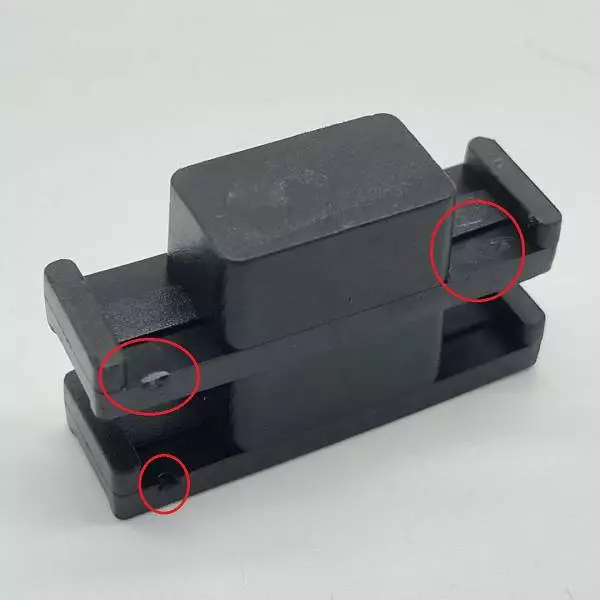Leichtes Material
Im Gegensatz zu den schwereren und umständlicheren Verfahren bietet die Heißschmelze ein gewichtssparenderes Endprodukt, das für die meisten Anwendungen ideal ist.
Wasserdichtes Finish
Geräte, die andernfalls für Wasserschäden anfällig wären, können nun von außen hermetisch abgedichtet werden, so dass auch Tiefseegeräte sicher und voll funktionsfähig bleiben.
Mehrfache Oberflächenhaftung
Das Niederdruckgießen und das Kaltgießen ermöglichen es, eine Vielzahl verschiedener Materialien mit Klebstoff aufzutragen, um die Komponenten zu stabilisieren und zu sichern.
Schockresistent
Leiterplatten und andere Komponenten, die in Umgebungen mit starker Beanspruchung eingesetzt werden, können jetzt besser vor Stößen und anderen Beschädigungen geschützt werden, die sie während ihres Einsatzes erleiden.
Chemikalienbeständig
Bauteile, die mit von außen aufgebrachten, nicht säurehaltigen Chemikalien in Berührung kommen, können nun geschützt werden, ohne dass die internen Schaltkreise Schaden nehmen.
Kompakt
Die Verwendung von Niederdruckdichtungen bietet einen inneren Schutz, so dass weniger äußere Schutzmaßnahmen erforderlich sind. Dies führt zu einer kompakteren und platzsparenden Konstruktion, ohne dass Stabilität und Schutz beeinträchtigt werden.
Ästhetik
Diese Form der Versiegelung und Formgebung bietet weitaus größere Verbesserungen in Bezug auf Form und Design als frühere Schutzmethoden.
Einhaltung der Vorschriften
Alle Thermoplaste und Polyamide entsprechen den ISO-Normen für Gesundheit und Sicherheit bei allen Anwendungen.
Umweltvorteile beim Niederdruckgießen
Tatsächlich bietet das Druckgießen insgesamt viele Umweltvorteile, die über die bisherigen Verfahren hinausgehen, und in einigen Fällen sogar Vorteile, die den Einsatz dieses Verfahrens zunichte machen. Hier sind die wichtigsten Umweltvorteile des Druckgießens.
Natürliche Produkte
Alle beim Druckgießen verwendeten Zutaten sind natürliche Materialien.
Wiederverwertbar
Überschüssiges Material, das beim Druckgießen entsteht, ist vollständig recycelbar. Das Material kann zurückgewonnen und mehrfach wiederverwendet werden. Das bedeutet, dass das Druckgießen eine Null-Abfall-Lösung ist.
Frei von gefährlichen Dämpfen
Beim Druckgießen entstehen keine gefährlichen Stoffe, weder in der Luft noch in flüssiger oder fester Form.
Verlängerung der Produktlebensdauer
Produkte, die sonst mit einem Verfallsdatum versehen worden wären, können nun länger gelagert und verwendet werden.
Weniger Produktbrüche
Da die Produkte nun robuster sind, ist die Wahrscheinlichkeit von Brüchen oder Fehlern geringer, was bedeutet, dass weniger Leiterplatten oder Schaltkreise ausrangiert werden und/oder ersetzt werden müssen.
Schlussfolgerung
Wie eingangs erwähnt, sind Niederdruckgussverfahren so alltäglich geworden, dass wir sie kaum noch wahrnehmen, obwohl wir ihnen in unserem Arbeits- und Privatleben wahrscheinlich mehrmals täglich begegnen.
Zu den typischen Verbraucher- und Kleinanwendungen gehören Produkte wie Kabel oder Kabelverzweigungen, bei denen sie zur Verstärkung und zum Schutz von Kabelenden eingesetzt werden. Produkte, die Sie täglich in die Hand nehmen und benutzen, wie z. B. die Fernbedienung Ihrer Autotür oder sogar die Fernbedienung Ihres Fernsehers, enthalten wahrscheinlich auch Niederdruckgussprodukte, um ihre Lebensdauer zu verlängern und die Stöße, mit denen sie in Berührung kommen, zu reduzieren.
Wenn Sie eine Anwendung haben, für die Sie das Niederdruckgießen in Erwägung ziehen, oder wenn Sie wissen möchten, ob Ihr Produkt für dieses Verfahren geeignet oder bereit ist, dann ist es immer eine gute Idee, mehr Informationen zu erhalten.
Wenn Sie Ihr spezielles Projekt besprechen möchten, egal ob es sich um eine Handvoll Prototypen oder um eine Serie von Tausenden von Einheiten handelt, dannKommen Sie und sprechen Sie mit uns hier bei LPM wo einer unserer erfahrenen Fachleute Ihnen bei Ihrer Anfrage behilflich sein und Sie durch alle notwendigen Prozesse führen kann.
